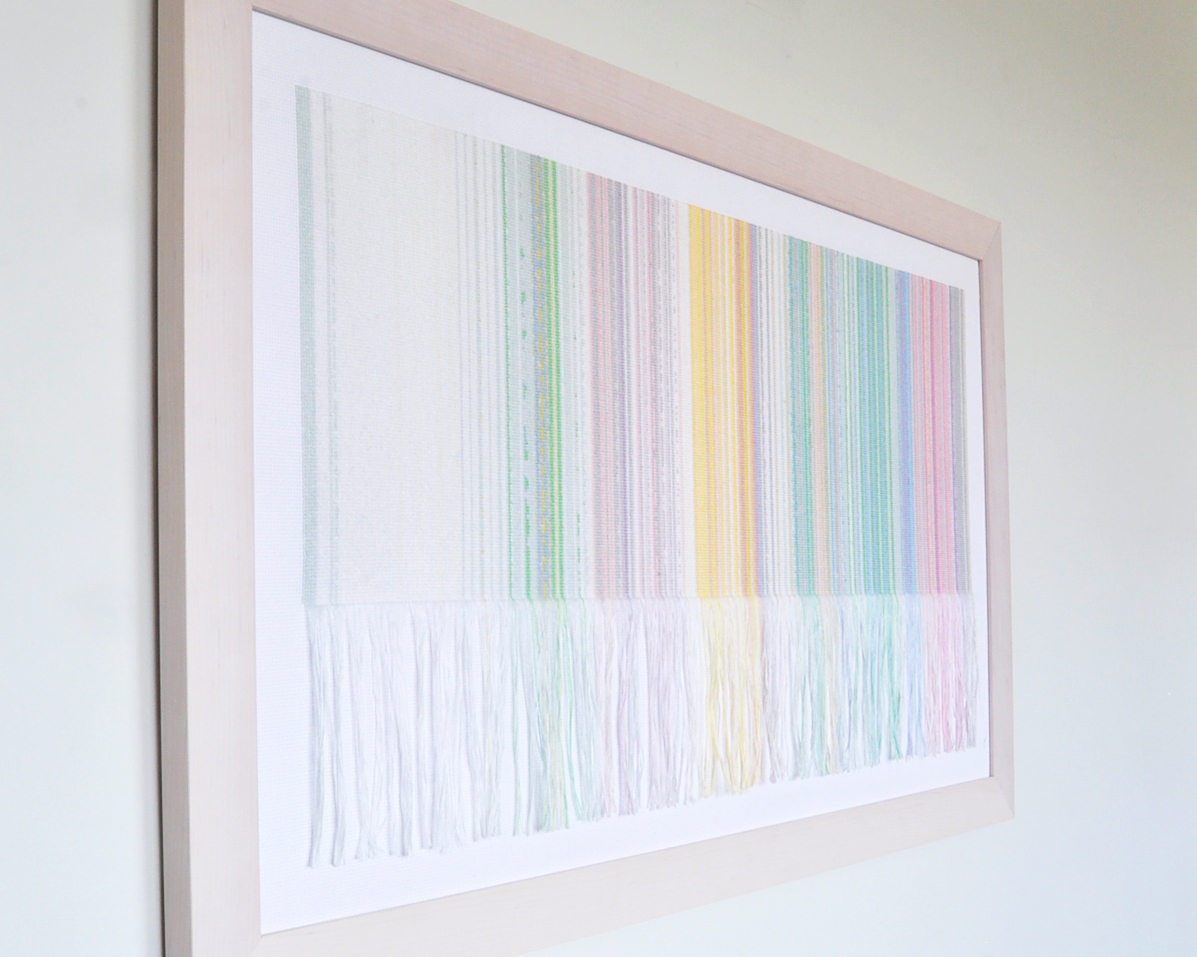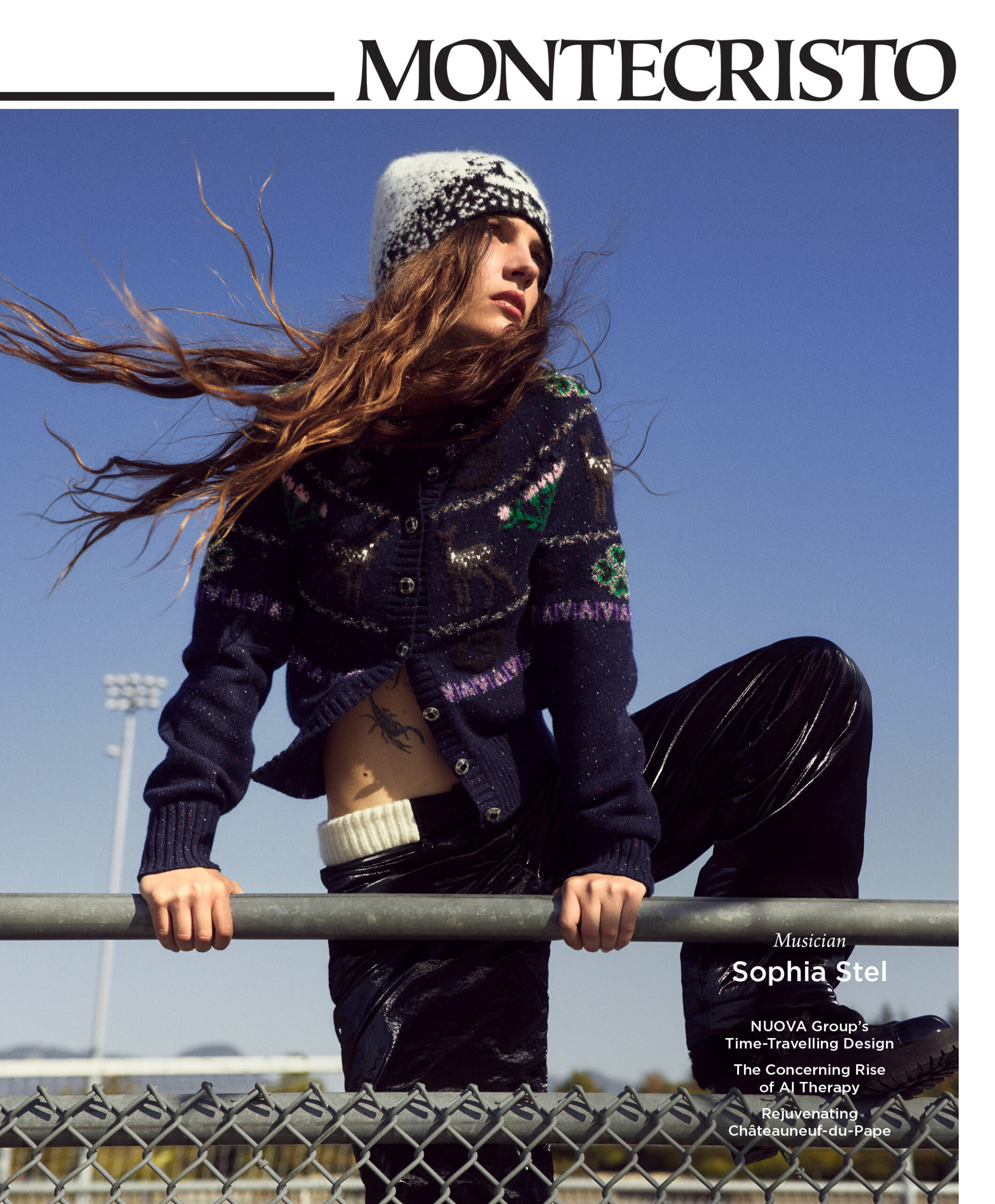One week after leasing a studio at Mount Pleasant’s City Centre Artist Lodge, visual artist Mallory Donen (who uses both she and they pronouns) broke her left arm. “Well, that’s going to not be great,” she thought. As a left-handed person, “I’m not going to be able to make anything.”
Donen’s main artistic medium is cross-stitch. While recovering from her injury, she remembered reading about a dual-handed stitching process—pushing the needle in with one hand and pulling it through with the other. The author asserted that this was “the proper technique,” Donen recounted, “and I was like, ‘What?’”
Setting down her embroidery hoops, she bought herself a free-standing scroll frame and tried the new technique. “It took a lot of practice,” she says, but “the two-handed way is faster, so my stitch rate got faster.”
This is not speculation—Donen has tracked her stitch rate over time. Now, she “can do 354 stitches in an hour.” It is both a personal and a public record. She posts daily “labour logs” on her Instagram. On her website, each piece is listed with the hours it took her to make it. However, galleries often exclude this information from exhibition labels. Intentional or not, this “erasure of labour” ends up “emphasizing what I’m trying to say,” Donen explains.
As an artist working in a medium traditionally excluded from fine arts, it is vital for Donen to make her efforts visible. “It’s really difficult when I put all of this time and labour into this work and then someone is like, ‘Well, why would I pay that much for that? My grandma could make it.’”
To demonstrate the value of her labour, Donen has unmade her own handiwork. She received a Canada Council for the Arts grant to create a limited-edition book called Invisible Labour: Cross-Stitching, Feminism, & the Collective Strength of Women. The book was inspired by, and includes images of, delicate handkerchiefs that her ama passed down to her. Donen recreated the embroidered handkerchiefs in cross-stitch and then unstitched these recreations, reusing the same embroidery thread and piece of cloth for each design. Through unmaking, she highlights how traditionally feminized labour goes unnoticed.
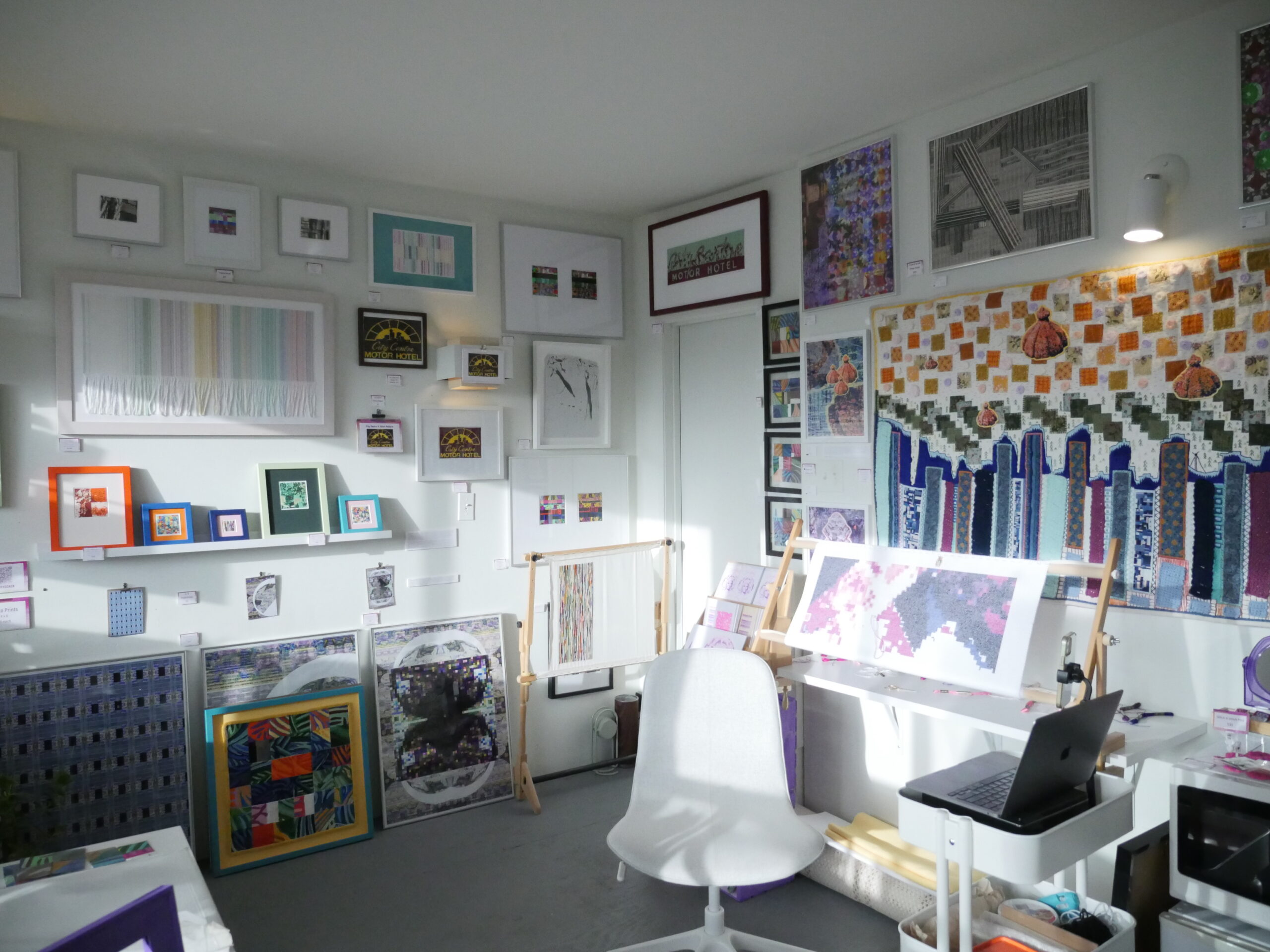
A look inside Mallory Donen’s studio.
Her ultimate goal is to unravel the border between arts and crafts: “People try to keep them separated, and I just don’t really think that’s fair.” This division is rooted in stereotypical gender roles, she explains. Fibre crafts are considered pastimes rather than artistic practices, as women traditionally learned and practised these media in domestic spaces.
This reflects Donen’s own learning experience. Her mother taught her to cross-stitch when Donen was 10 years old. “I always had the skill,” she says, but “I don’t know if I ever finished anything.” Instead, she spent her youth playing sports—including volleyball, soccer, basketball, badminton, and weightlifting. “I was very competitive. I always had to be the best.”
Related stories
- Painter Firelei Báez Confronts the Pervasive Impact of Colonialism Through Immersive Artworks at the Vancouver Art Gallery
- The Vancouver Club’s Changing Art Collection Illustrates an Evolving Institution
- Sorting Through the Collection of a Riot Grrrl Zine Artist
Following studies in fine arts focused on abstract painting, Donen turned to digital art. She started creating patterns in Photoshop while resisting suggestions to automate her process. That act of creation through repetition brought back childhood memories: “I was thinking about other processes that follow instructions, and that’s where I made the connection.” She called her mom and asked, “Can you remind me how to cross-stitch?”
With that long-distance lesson and some supplies, Donen started the work that led to her MFA thesis: “I Come From a Long Line of Machines.” The thesis explored “computers and craft and women’s work,” including the first general computing model: the Analytical Engine. This proposed computer was “based off of a jacquard loom,” Donen explains, which used punch cards to automate cloth weaving. The British mathematician Ada Lovelace wrote that, by applying this method to numbers rather than threads, “The Analytical Engine weaves algebraical patterns just as the jacquard-loom weaves flowers and leaves.”
Technology is a reoccurring theme in Donen’s work. In the Static Glitch series, she creates cross-stitch versions of digital mishaps, displayed alongside the source glitches as “a translation of the digital to the handmade.” Many of these glitches occurred while she was creating digital art pieces for her master’s degree. Her old laptop lacked storage and power, so it would often crash while she worked on large files. In one instance, she opened an image in Photoshop, which “collaged a bunch of my files together,” she explains, and when she saved the image, it “loaded into a new glitch, so I just kept doing it.” She labelled that file of glitches Happy Accident.
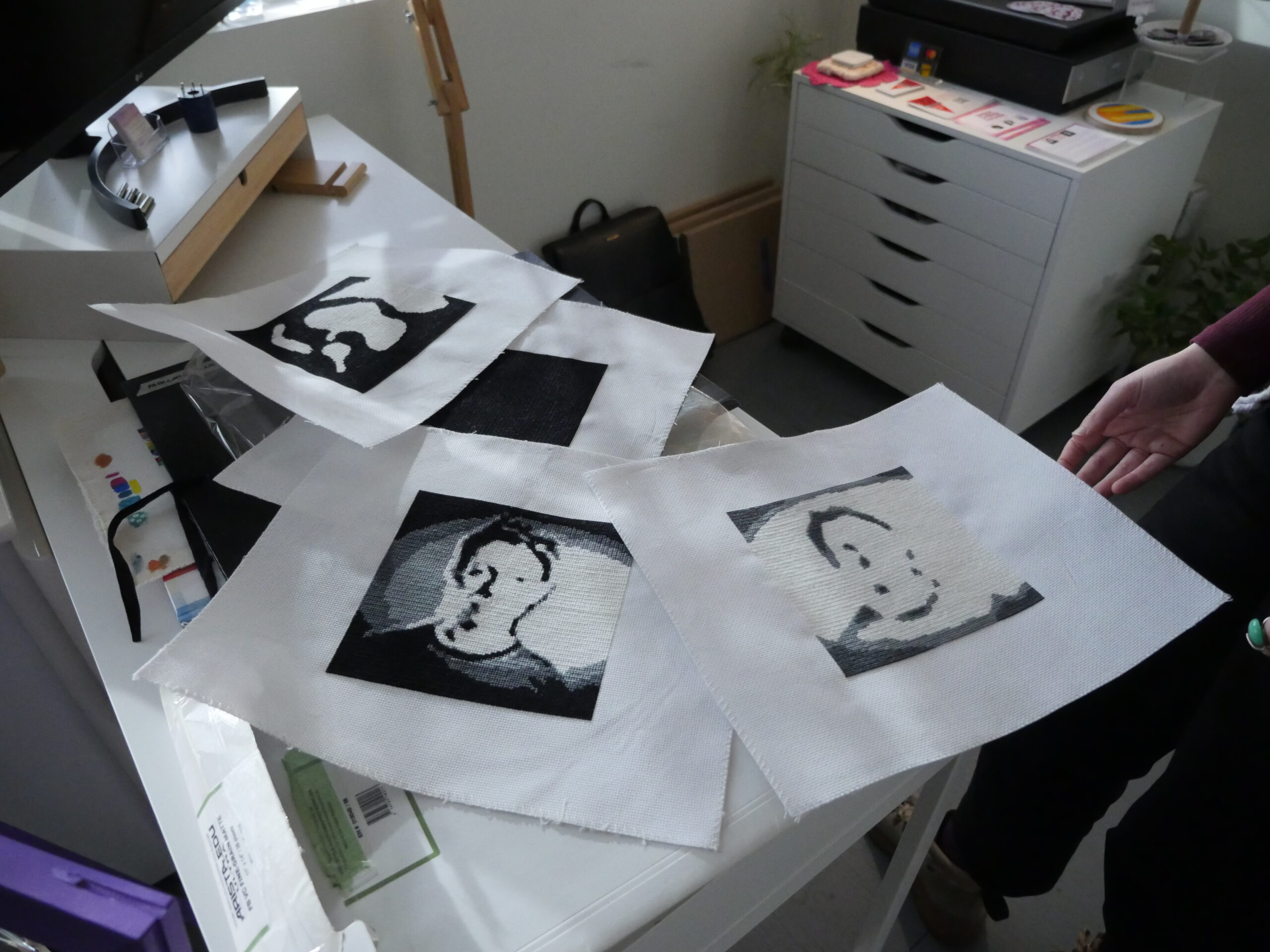
A sampling of textile self-portraits by Donen.
To Donen, glitches are “a representation of being human.” Machines malfunction due to “burnout,” she says, and “I can definitely relate to that.” She often leaves errant stitches in her work on purpose. These machine- and human-made errors serve as a reminder to herself and others to “embrace the imperfect,” she reflects, “even though I really like order.”
Cross-stitch has been her main medium for nearly eight years. “I just love the process so much,” she says. “I have so many ideas, and I feel like I’m catching up to all of them.” She has notebooks full of potential projects and techniques she wants to explore, including playing with colour and stitch dimensions and working without a pattern.
However, Donen is aware of an unfulfilled promise she made to herself: “I always said when I got a studio, I’d start painting big again, and I haven’t.” This year, she bought herself some canvas to use before the City Centre Artist Lodge closes for redevelopment. She has enjoyed having the studio, especially since it was unclear how long the artists could continue to work there, “but we have been told we’re guaranteed one more year,” she says, “so we’re very lucky.”
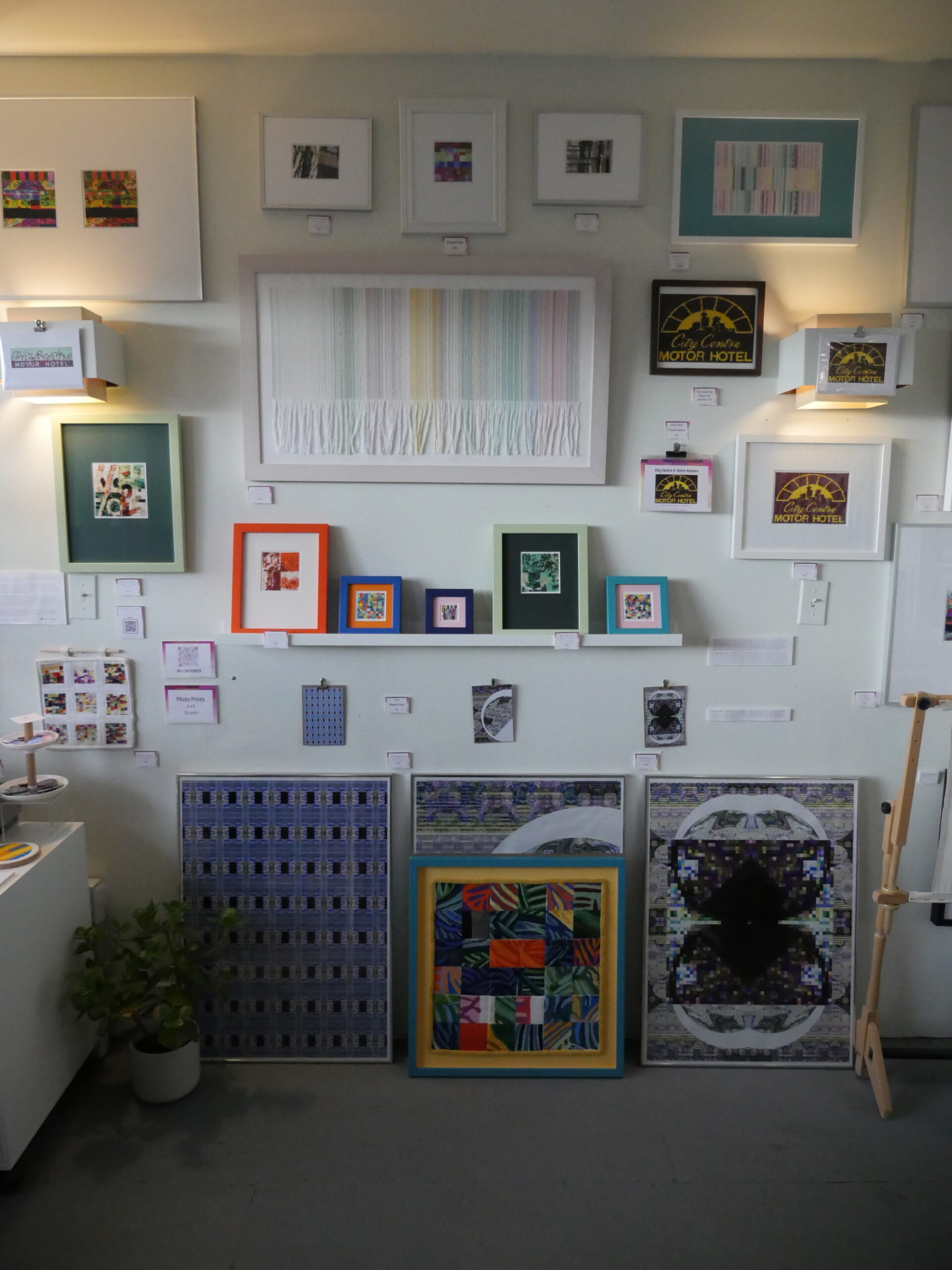
Digital art and cross-stitch come together in Donen’s work.
Any painting Donen does this year might be incorporated into her cross-stitch practice. “I still think of everything as cross-stitch.” She often combines and recycles previous works. For a recent piece, she cut up her old abstract paintings into squares, numbered the pieces, stitched them together, and recreated a canvas quilt in cross-stitch. She has also created a new digital work that she is currently replicating in thread. “It will be my biggest cross-stitch piece to date.”
“There’s just something so unique and exciting about it,” she says of what keeps her cross-stitching. “I just can’t part with it.” She also enjoy hearing from viewers and patrons that they “‘don’t see anybody [else] doing this.’ … It makes me feel like I must be doing something right as an artist.”
Read more arts stories.

